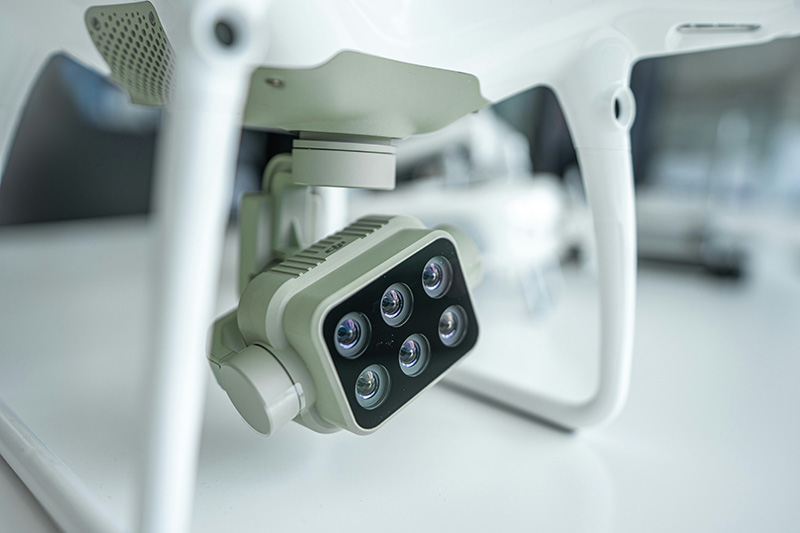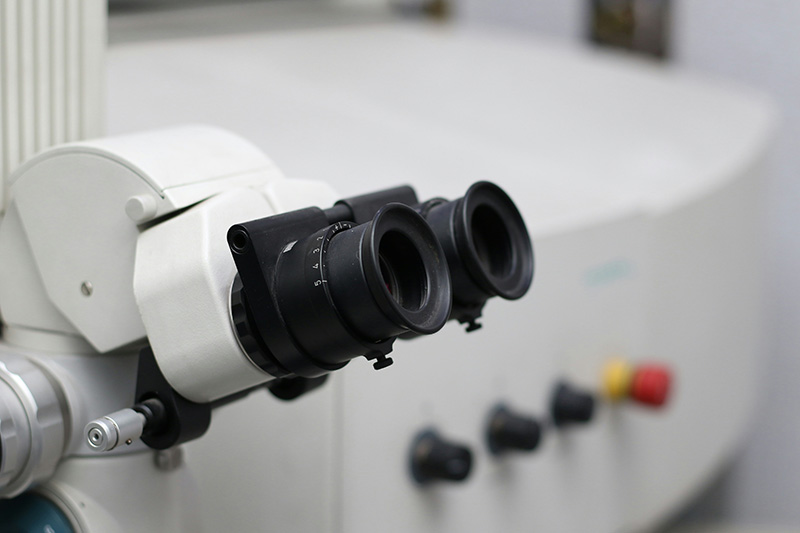Machine vision inspection technology has been widely adopted across various industries, demonstrating significant advantages in industrial manufacturing, healthcare, and automotive production. As an advanced interdisciplinary technology integrating image processing, optical sensing, artificial intelligence, and automatic control, machine vision enables high-speed, high-precision, non-contact inspection by emulating the functions of the human visual system. It effectively replaces traditional manual visual inspection in complex industrial environments, substantially reducing false and missed detection rates while enhancing the overall level of production automation and intelligence. With continuous advancements in sensor performance, computing power, and deep learning algorithms, the application scope of machine vision has expanded steadily, extending into critical stages such as research and development, quality assurance, assembly, and operation and maintenance. The following outlines its primary application domains and representative use cases.
Industrial Manufacturing
In the electronics and semiconductor industry, product quality requirements are exceptionally stringent, where even micron-level defects can lead to device failure. Machine vision systems are extensively employed for character recognition on integrated circuit (IC) chips, ensuring each chip bears a unique and traceable identifier. Additionally, these systems automatically detect defects such as bent, broken, or oxidized pins, and integrate X-ray or infrared imaging technologies to identify internal anomalies at solder joints—including voids, cold solder joints, and bridging—thereby ensuring packaging reliability. Furthermore, during wafer fabrication, machine vision supports key process monitoring tasks such as pattern alignment and interlayer overlay error measurement.
In printed circuit board (PCB) inspection, the increasing circuit density and component miniaturization pose challenges that traditional methods struggle to address. Automated Optical Inspection (AOI) systems leverage machine vision to efficiently detect common defects such as solder bridging, solder balls, insufficient solder, and component misalignment. Sub-pixel-level image analysis enables precise component positioning and placement deviation assessment, making it integral to the quality closed-loop control of surface mount technology (SMT) production lines and significantly improving first-pass yield.

In food packaging, safety and regulatory compliance are paramount. Machine vision systems perform real-time detection of foreign contaminants such as metal, plastic, and glass particles. They verify seal integrity, checking for wrinkles or contamination, and conduct comprehensive inspections of label print clarity, positional accuracy, and barcode readability. This prevents issues such as misprints, omissions, or incorrect date labeling from reaching the market, supporting compliance with food safety standards including HACCP and ISO 22000.
Automotive Manufacturing
As a highly complex, multi-stage manufacturing domain, the automotive industry demands strict consistency in components and precision in assembly. In component inspection, machine vision technology automatically identifies surface defects such as bulges and cracks in tires, mitigating potential safety risks. Three-dimensional contour scanning is used to measure brake pad flatness and parallelism, ensuring consistent braking performance. High-resolution cameras combined with laser line scanning enable precise evaluation of panel gaps and flushness, guaranteeing exterior quality aligns with design specifications.
During final vehicle assembly, which involves numerous manual and semi-automated operations, errors such as missing or incorrect installations are common. Machine vision systems capture real-time images at critical checkpoints—for example, verifying proper installation of seatbelt retractors and clip engagement—using template matching or deep learning models to assess assembly correctness. In engine sealing processes, 3D imaging monitors adhesive bead trajectory, width, continuity, and breaks, ensuring sealing integrity and structural strength, thereby reducing rework rates.

In response to emerging challenges in new energy vehicle development, machine vision plays a crucial role. For instance, in battery cooling systems, the film thickness of corrugated water-cooled plates directly impacts heat dissipation efficiency and battery longevity. Nanometer-level thickness measurements can be achieved using spectral confocal or multi-light source interference techniques. In IGBT (Insulated Gate Bipolar Transistor) module packaging, the height uniformity of heat dissipation pins affects thermal resistance distribution. By combining machine vision with laser triangulation, micron-level height variations can be detected, ensuring long-term operational stability of power electronics.
Medical Applications
In medical imaging diagnostics, the integration of machine vision and artificial intelligence has become a vital tool for clinical decision support. Intelligent analysis of CT, MRI, and X-ray data allows automated identification of suspicious lesions, aiding radiologists in early detection of conditions such as lung cancer, breast cancer, and stroke. Voxel-based 3D visualization techniques facilitate organ segmentation, tumor volume quantification, and surgical planning, enhancing diagnostic accuracy and treatment efficiency.
For medical device quality control, the functionality of precision instruments like surgical forceps and staplers depends on mechanical integrity. Machine vision systems evaluate whether opening and closing mechanisms operate smoothly, confirm secure locking, and detect minor surface imperfections such as scratches, corrosion, or deformation. For transparent disposable products such as test tubes and syringes, backlighting or bright-field illumination combined with edge enhancement algorithms enables efficient detection of micro-defects—including bubbles, impurities, and scratches—ensuring compliance with GMP standards for sterile products.
In the production of in vitro diagnostic reagents, coating uniformity is critical to test accuracy. For example, in glucose test strips, inconsistent enzyme layer deposition can compromise reaction sensitivity. Machine vision systems employ high dynamic range imaging and reflectance analysis to monitor coating thickness distribution in real time, enabling immediate feedback and adjustment of coating parameters. This ensures batch-to-batch consistency and adherence to rigorous regulatory requirements such as FDA and CE certification.
Other Application Domains
In modern agriculture, machine vision is driving the intelligent transformation of greenhouse cultivation. Deploying visible light and near-infrared cameras, systems monitor crop growth indicators—including leaf color, plant height, and canopy density. Integrated with AI models, they assess nutrient status and pest or disease risk, guiding precision fertilization and irrigation. Simultaneously, fruit color, size, and shape are classified to enable maturity-based harvesting, improving agricultural product commercialization rates.
In logistics and warehousing, barcodes and QR codes serve as essential tools for item tracking. Machine vision code readers rapidly decode labels on high-speed conveyor belts, maintaining accuracy despite dirt, tilt, or glare. When combined with robotic guidance, these systems also perform package dimensioning, shape recognition, and automated sorting, finding widespread application in e-commerce fulfillment centers and express delivery hubs, significantly boosting operational efficiency and accuracy.
In remote sensing, multispectral and hyperspectral sensors mounted on satellites and unmanned aerial vehicles collect vast volumes of surface imagery. Machine vision algorithms support land use classification, vegetation coverage monitoring, urban expansion analysis, and water pollution identification, providing scientific insights for environmental protection, disaster, and resource management. For example, post-wildfire assessments can automatically delineate burned areas through pre- and post-event image comparison. In agricultural remote sensing, NDVI (Normalized Difference Vegetation Index) analysis reflects crop health and supports yield forecasting.
Through non-contact inspection methods, machine vision has significantly enhanced production efficiency and quality control capabilities. It has been successfully implemented in over 3,000 intelligent production lines, with its stability and reliability thoroughly validated. Driven by advances in 5G communication, edge computing, and industrial internet platforms, machine vision is transitioning from isolated inspection points toward system-level integration. In the future, it is poised to play an increasingly important role in advanced smart manufacturing applications such as digital twins, predictive maintenance, and adaptive control.
Post time: Oct-29-2025





